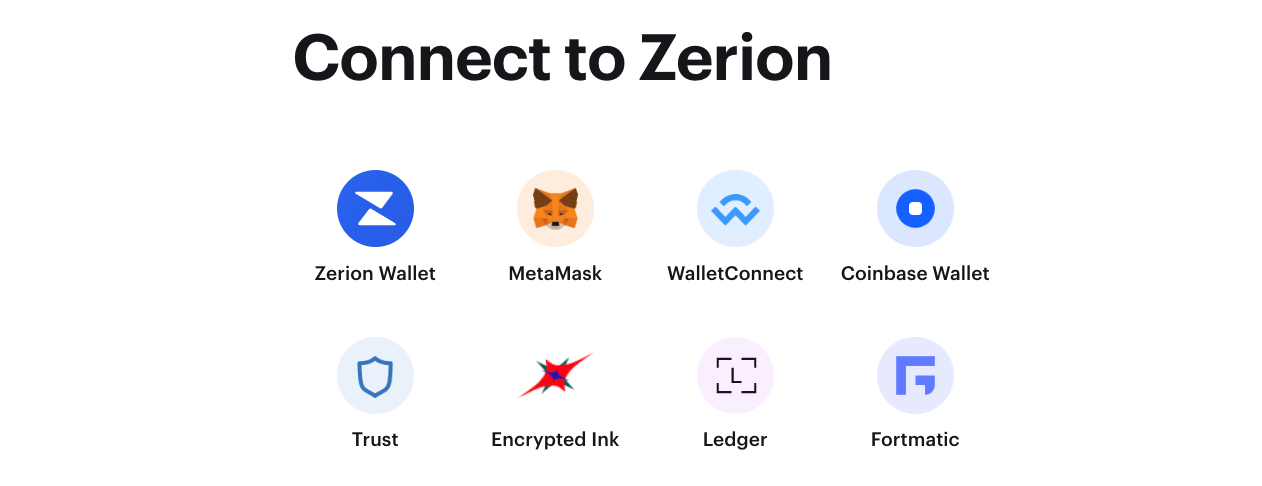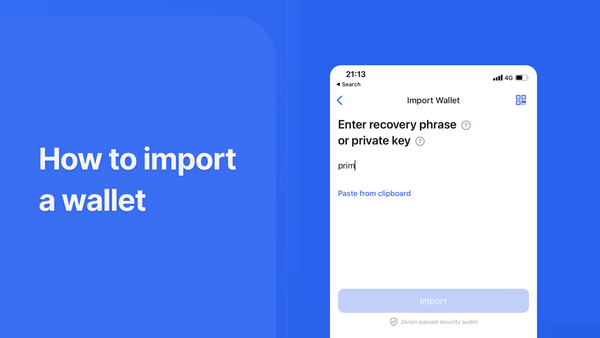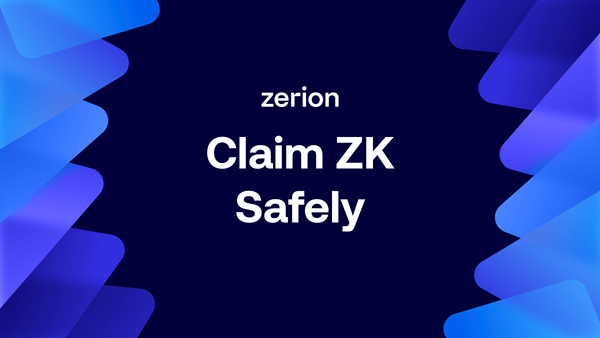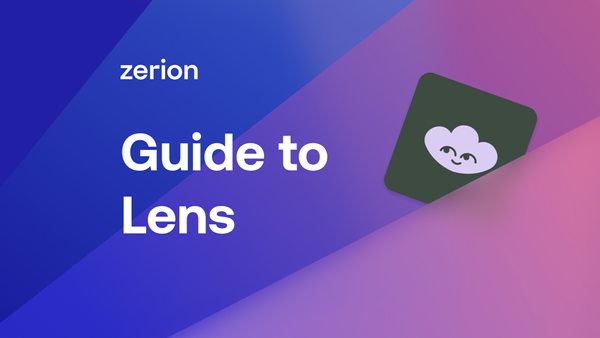Web 3.0 or web3 is how many startups and VCs describe the next version of the internet.
Unlike the current web dominated by Big Tech, Web3 aims to bring back the decentralization of the early Internet while giving greater privacy, security, and ownership to the people.
Some people, however, dismiss Web 3.0 as just a buzzword that aims to rebrand crypto. So, who is right?
In this post, we will explain what Web 3.0 is, how its technology has evolved, what projects are building this new Internet, and how you can get involved.
Definition of Web 3.0
There is no widely accepted definition of Web 3.0 (or web3 as it's more commonly spelled). Different people put different ideas into this term.
Originally, Web 3.0 referred to the so-called “Semantic Web”, which seeks to make the Internet machine-readable. Coined by Tim Berners-Lee, the inventor of the World Wide Web, the Semantic Web is “a web of data that can be processed directly and indirectly by machines". Instead of using HTML, the proponents of the Semantic Web want to use new languages specifically tailored to data.
Web3 (also spelled with the lower case as web3) isn’t concerned about languages or machine readability.
Instead, Web3 refers to a decentralized version of the internet. In 2014, Gavin Wood, one of the co-founders of Ethereum and the creator of Polkadot, coined the term Web3. Several years later he founded the Web3 Foundation to create “a decentralized and fair internet where users control their own data, identity, and destiny”.
This concept of ownership in Web3 is possible thanks to crypto.
Cryptocurrency and blockchain
There is a simple rule of thumb to check if you’re interacting with Web3.
If on a web page you see a ‘connect wallet’ button — that’s likely Web3.

Instead of entering a login and password, you connect your non-custodial crypto wallet to interact with that website. Your wallet’s cryptographic signature verifies your identity without relying on a centralized database owned by Facebook or Google.
In a centralized Web 2.0 application, your account is essentially a record in a database. Your account can have a lot of data (try downloading your Facebook data and you’ll be shocked). But all this data is owned by the application’s operator.
In a decentralized Web 3.0 application, your account is an address on a blockchain such as Ethereum. This address can hold cryptocurrencies, tokens, NFTs, and has the full history of past interactions with other addresses and applications. On Ethereum, this account is public but it could remain anonymous and you’re the only one who can control it.
This shift from siloed accounts to user-owned accounts is a big deal.
In fact, decentralization can create a whole set of new applications, including rich metaverses.
Interoperability of Web 3.0 and the metaverse
A metaverse is a persistent virtual world where people can interact with each other.
While the media often portrays metaverses as something futuristic, it already exists. Games like Fortnite and Roblox are metaverses even though they have rather narrow audiences.
These metaverses are also controlled by their developers.
Epic Games, the developer of Fortnite, has full control over the game universe, including player accounts. The skins for which many players pay real dollars are still owned by Epic Games, not the players.
Web3 can change that.
As we discussed, your crypto wallet can hold tokens and NFTs. These NFTs can represent items in one metaverse. If you buy that NFT and hold it in your wallet, nobody can take it from you. Only you can transfer or sell it.
This can unlock interoperability between different metaverses. NFTs that have some functions in one metaverse could also be used in another metaverse.
If all this sounds far-fetched, a glance at the history of the Web can help to see the future trajectory.
Evolution of the Web 3.0 technologies
The Internet has developed in several distinct stages.
Web 1.0 (1989-2005): read-only
The early Internet was truly decentralized.
Anybody had the freedom to do anything they wanted as long as it was done within the common open-source protocols: TCP, IP, HTTP, SMTP. We all still use these protocols.
However, as a user, you didn’t have much to do on the Internet.
Most early websites were passive. You could come and read. Even adding comments was rare.
Web 2.0 (2005-present): read and write
In the early 2000s, the Internet became more complex.
The first social networks like MySpace let everyday users create web pages, publish content, and interact with each other.
These new capabilities unleashed a wave of innovation that spurred social media, complex web applications, ecommerce, and multi-billion dollar companies.
The proliferation of user-generated content also created natural monopolies. All the Facebook posts, YouTube videos, and Amazon reviews live in databases owned by Big Tech. And these mountains of data help big companies to create new products that lead people to spend even more time creating data.
Web 2.0 led to several problems.
- User data is centralized: All your data exists on centralized servers and can be abused, hacked, or leaked.
- User data is not portable: You can’t easily move your content or audience with you. If TikTok is banned in your country, you need to manually export your videos and somehow ask your followers to switch to a new platform.
- User data is sold: If you don’t pay for the product, you are the product. Facebook and Google used your data to create an enormous advertising duopoly.
Web 3.0 (emerging now): read, write, own
What if you could own your data?
Web3 aims to do that by replacing centralized databases with blockchain technology. Instead of dwelling on corporate servers, your data could sit in your crypto wallet as NFTs.
The Web 3.0 movement seeks to solve the problems created by Big Tech’s dominance in Web 2.0.
- User data is owned by users: The data exists as assets on blockchains and other decentralized technologies.
- User data is portable: Only you control your data through your Web3 wallet.
- User has full control over data: Some apps might let the user monetize their own data. Other apps might request payments but ideally, this should be explicit and clear.
The new decentralized web is still more of a vision as the stack of Web 3.0 technologies is not fully formed yet.
Web 3.0 technologies
From the technology perspective, Web3 does not seek to fully replace the stack that powers Web 2.0.
Instead, Web3 can introduce decentralization where it matters. This could be data storage, file hosting, backend logic, login, and authorization.
| Web 2.0 | Web 3.0 | |
|---|---|---|
| Frontend | HTML, CSS, JavaScript. | The same HTML/CSS/JS plus a crypto wallet for interacting with the blockchain and signing transactions. |
| Backend | Python, Node.js, etc. | Smart contracts in Solidity, executed in the Ethereum Virtual Machine. |
| Data | MySQL, Oracle, etc. | Off-chain decentralized storage such as IFPS, Swarm, or Arweave. |
There are several other important elements of the Web3 tech stack, including node infrastructure providers such as Alchemy and off-chain indexing solutions such as The Graph. If you want to get a deeper understanding of how this decentralized stack works, Preethi Kasireddy prepared a very useful guide on Web3 app architecture.
It’s more important, however, to understand the key features that these technologies enable.
Key features of Web 3.0
Decentralization enables several important features that distinguish Web3 from its predecessor.
Web 3.0 technologies are
- Trustless
- Verifiable
- Permissionless
- Crypto-native
- Community-owned
- Resistant to DDoS
Of course, these advantages come at a cost. Smart contracts are slower and more expensive than a centralized backend. The UX of Web3 is also still far from perfect.
But also not every web app needs to be Web3.
Web 3.0 applications
While elements of decentralization could be useful in a wide range of cases, Web3 also enables new unique applications.
DeFi is probably the most striking example of Web3 applications. Smart contracts created a new alternative financial system, complete with trading, lending and borrowing, derivatives, and more.
DAO or decentralized autonomous applications offer an alternative way of organizing people and work. Unlike traditional firms and other formal organizations, DAOs rely on code instead of law to create structures for cooperation. Instead of a bank account, a DAO can use a jointly managed crypto wallet. Instead of shares, DAO members can hold tokens and use them to vote for important decisions. Besides being Web 3.0 applications themselves, DAOs can also own other Web3 apps.
NFTs are not just expensive JPEGs, they can create a new alternative identity, outside of government IDs and profiles on Facebook or Google.
GameFi apps can create new play-to-earn mechanics that merge play and work. Some games like Axies Infinity already give people in developing countries an opportunity to earn a living wage while playing.
Metaverses can combine all those applications to create persistent virtual worlds, where a crypto wallet would act as a Web 3.0 passport and the holder of all assets, identities, and experiences.
Yet before these ambitious visions could come to fruition, a lot of missing blocks must be built. That’s what some of the blockchain projects are working on.
Web 3.0 blockchain projects
Web3 relies on a set of new decentralized technologies. Many of these projects have their own tokens that form the basis of their internal economies.
Popular Web 3 coins
Web 3.0 tokens are not a clearly defined category. Any project that works on building decentralized storage or supporting infrastructure could be considered a Web 3.0 token.
A very incomplete list (and definitely not financial advice!) would include the following coins.
- Filecoin: An open-source cloud storage marketplace and an incentive layer for IPFS, a distributed peer-to-peer file storage used by some Web 3.0 apps. While FIL, the native token, runs on its own blockchain, WFIL, a wrapped version, is on Ethereum. With a market cap of over $12 billion at its peak, Filecoin is one of the best-known Web3 coins.
- Arweave: A network that enables ‘permaweb’, a permanent distributed storage. You can pay with AR, the native token, once and store any files forever. AR has its own distributed ledger and wallet.
- StorjNetwork: Decentralized cloud storage. Instead of maintaining its own data centers, Storj relies on a peer-to-peer network of organizations and individuals that share storage spaces. STORJ is the native token used for incentives within the network.
- Livepeer: A platform for decentralized live video streaming. LPT is the protocol token that can be staked to secure the network.
- The Graph: An indexing protocol for organizing blockchain data and IPFS. Web3 developers can use the Graph Network to access public blockchain data in their applications. GRT is the protocol token that aligns incentives between different participants.
- Chainlink: A network for decentralized ‘oracles’, which bring real-world data into the blockchain. If a smart contract needs data such as stock prices, weather, or football match outcomes, they need oracles. LINK is the protocol token paid to node operators for providing the data.
These are just some of the Web3 tokens by projects that work on enabling a decentralized Internet. Please do your own research before buying any coin.
How to buy Web 3.0 tokens
To buy Web 3.0 tokens you would first need to have a crypto exchange account (the Web 2.0 option) or a non-custodial crypto wallet (the Web3 way).
Take the Web3 wallet route to experience how the decentralized internet works:
- Create a non-custodial wallet. For example, Zerion Wallet works on any device and 10+ networks while tracking all DeFi positions and NFTs.
- Buy some ETH. You can purchase crypto with a card right in your Zerion Wallet.
- Find the token. Zerion aggregates all decentralized exchanges: just type the token's ticker and it will find you the exchange that offers the best price.
- Buy the token. You'll need to sign the transaction with your non-custodial wallet.
That’s it! You’ll the token show up in your Zerion’s overview, which shows everything that you hold in your crypto wallet.
Join Web 3.0
Web3 is still in its infancy. But it’s already here. If you see a ‘connect wallet’ button, that’s one of its signs.
In this post, we reviewed the definition of Web3, explored its evolution, and outlined the technology and applications. But the best way to get the taste of Web3 is to create an Ethereum wallet, load it up with some ETH and set off on your decentralized journey.
FAQ
What is Web 3.0 also known as?
Web 3.0 or web3 is the new decentralized version of the Internet. Unlike Web 2.0, which came to be dominated by Big Tech, Web 3.0 seeks to return to the decentralization of the early web while also leveraging the native digital payments with cryptocurrencies.
Web 3.0 could also refer to the Semantic Web or a vision for a machine-readable Internet, which seeks to introduce new protocols in addition to HTML.
What is Web 3.0 and its examples?
An example of Web 3.0 is any decentralized application with which you can interact using a non-custodial crypto wallet. A Web3 application might look like a regular website but instead of a centralized backend, it uses smart contracts for some or all of its business logic.
Does Web 3.0 already exist in 2022?
Yes! While the technology and UX are far from perfect, Web3 applications are already here. DeFi applications are a great example of what Web 3.0 can do.
What Web 3.0 is popularly known for?
Web 3.0 or web3 is known as the decentralized, user-owned internet. Web3 uses blockchain and other decentralized technologies to give control back to the user.



